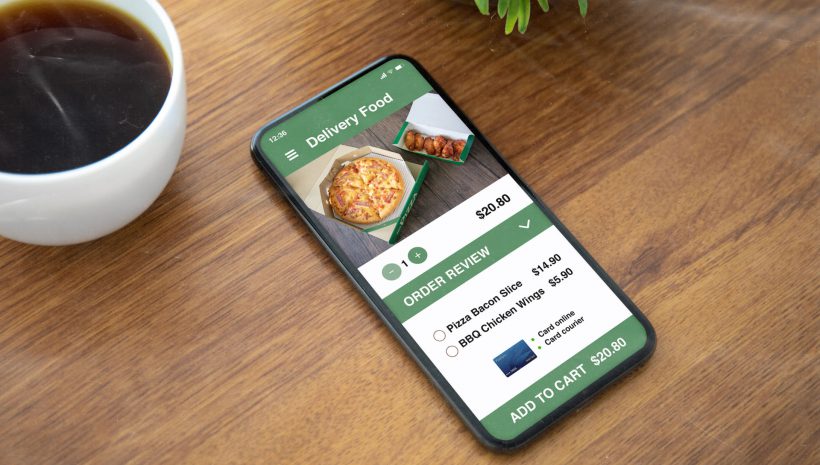One of the best things about advancements in technology over the past decade is that creating a website is now something that almost anyone can do. You don’t need specific technical knowledge, you don’t need a massive budget, and there is a wealth of information out there to help you set everything up.
This is excellent news for entrepreneurs who want to market their business and sell their products to an online audience. Research shows that around a quarter of the world’s population chooses to shop online. That’s over 2 billion potential customers that any business owner can try to reach.
For those just getting into the subject, the best way to get started is to use a simple website builder, such as Boxmode, which lets you create a slick, responsive website for free. Once you have got your design sorted and your content in place, you need to understand how to optimize your website according to web design best practices.

Learning web design best practices – why does it matter?
If you don’t invest time in search engine optimization, if you don’t strive to create valuable content, and if you don’t bother to make your website user friendly, you’ll be much less likely to achieve your business goals.
People are busy these days, and the internet is a vibrant, bustling place with plenty of distractions. If you want online shoppers to take notice of you, you’ll need to follow the methodology that helps boost your SEO rankings, improve click-through rates (CTR), increase your web traffic, lower your bounce rate, and provide customers with genuine value.
Website design matters because it is the first impression, and that impression forms very quickly. It takes around 0.05 seconds for a person to make an opinion about your site, and the design plays a huge part in the formation of that opinion. Therefore, bad design can kill your potential relationship with a customer.
If your website is clunky, confusing, and visually uninspiring, most online browsers will leave and never return. On the other hand, if you take the time to design a clear, visually attractive, searchable website, users are likely to stay, enjoy their experience, buy your products and services, and keep coming back for more.
Many different elements make up a website design. Paying attention to each will improve your performance, boost your brand, and ultimately result in more business success.
Keep text clear and concise
If a customer lands on your site and bumps into a wall of text, they are likely to feel overwhelmed and look for an escape route pronto. It’s not that you shouldn’t make your site informative. In fact, quality content is a great way to boost your SEO. However, there are pages where more text is appropriate (such as your blog), and pages where it will merely make your website feel cluttered and confusing (such as your homepage). Good web design creates room for both, but will always ensure that landing pages and the homepage are as clear and easy to navigate as possible. You might have a lot to say, and you might think that bombarding visitors with all that information can help get your message across, but it will do the opposite. You should be able to summarize your offer and your story in just a few sentences. It’s all about choosing words that resonate with your customers, deliver the most significant impact, and motivate them to act.

Show, don’t tell
One of the most important lessons to be learned when it comes to excellent web design is that showing your customers what you mean trumps telling them what you want them to hear every time. Think about it; if you are told something that feels intrusive, it doesn’t leave any room for curiosity, it can also feel patronizing or make the recipient defensive. While you may think that a laborious explanation will give customers a better understanding of your business, showing them through clever content and exciting visuals can actually enhance their engagement. A striking visual and a clear message will stay with the viewer, whereas a long explanation might be harder to follow or remember. You have the space to go into greater detail if a person then clicks on links or other pages of your site, but on your landing pages, try to adopt the ‘show don’t tell’ mentality.
Pay attention to your sentence and paragraph length
Another easy tip to ensure your business site aligns with web design best practices is to keep sentence length short. The simple reason for this is that short sentences are easier to read. People who visit your website don’t want to have to put loads of effort into finding the information they require. They want to be able to skim your site and extract what’s relevant and exciting to them. Complex sentences will make it more challenging for readers to digest your content and absorb your message. So take the time to go through existing content and ensure that any longer sentences are broken down.

Similarly, short paragraphs will also help readers better take in your content and come away with an understanding of the core points. Using short paragraphs also creates plenty of white space around your text, which helps keep web pages clean and the web design clutter-free. This also allows readers to skim read rather than have to wade through larger paragraphs. Bullet points and lists also work well.
All of the above will help reduce the amount of text on a page and ensure that any call to action (CTA) stands out, making it more likely to have an impact on visitors.
Make sure visitors can find and understand your CTA
Every page on your website should have a clear call-to-action that guides visitors on their user journey towards a conversion. Whatever your goal is, be it newsletter signups, downloading a discount voucher, or purchasing your product, your CTA needs to be bold, powerful, and easily understandable.
If you bury your CTA or make it too complicated or if you beat around the bush, chances are your customers won’t get what you are asking of them, and your website will fail. Remember that it is OK to ask customers to take action, and you should make sure that it’s self-evident what it is you want them to do and how they go about doing it. Well-thought-out CTA buttons will drive conversions, and they need to be placed throughout your web pages. If you only put it on your homepage, you shouldn’t expect users to navigate back there if they are deeper into your site. Make sure it’s visible wherever they are so that they have the opportunity to convert at any point during their buyer’s journey.
Be consistent in your messaging
Provided you have a single goal, you should make sure that your message is placed consistently throughout your website. You can’t guarantee that all visitors will land at your homepage; you also can’t be sure that they will follow your carefully mapped out journey to get them to convert. Lots of visitors may browse your site for a while, may click through to a few pages, return to the homepage, or exit and re-enter later. Because there is no specific pattern, you need to ensure consistency across your site. Keep your CTA button the same on every page so that visitors become familiar with it. Instead of changing the wording or design of your CTA button on different pages, keep it identical to help fortify your message and make it more persuasive.
Create a simple navigational structure
Providing a great user experience is crucial if you want visitors to remain on your site and return to it time and time again. If your navigation is unclear, and customers end up getting lost on your site or fail to find what they are looking for quickly, they’ll leave to check out your competitors. When you design your website, it’s vital to keep your customer in mind at all stages. A complicated, cluttered, or nonsensical navigation won’t do you any favors in this regard.
When it comes to excellent web navigation design, you don’t need to reinvent the wheel. Keep your menu at the top of your homepage, with options going horizontally across the top. This is the standard layout and what web users have come to expect. Don’t overwhelm them with excessive options – the more choices you provide, the harder it will be for your customers to make a decision – they’ll feel overwhelmed and confused, and this will harm your conversion rates. If your current website structure is complicated, you might need to spend some time addressing this and eliminating or merging any excessive or unnecessary options.
Optimize for mobile
If you didn’t think it was important to optimize your site for mobile, here are some hard-hitting stats for you:
- 80% of users searched the internet via a mobile device in 2019;
- 40% of online transactions are completed using mobile devices;
- Last year US mobile search ad spending was estimated at 28.12 billion.
If you don’t optimize your business website for mobile users, you risk losing a considerable number of potential customers who find your site frustrating and clunky to access when on the go.

Mobile internet traffic is set to rise, and with 57% of people claiming they wouldn’t recommend a company to others if their mobile user experiences were poor, it has never been more critical to make sure that you’ve designed your site with mobile users in mind. Your website design should be responsive so that a simplified version of your site can be accessed from smaller screens of mobile phones. This will provide a much better user experience and is also beneficial for SEO.
Search engines take mobile optimization as a major ranking factor. This is because Google acknowledges the significant number of people who access the internet via their mobile devices and wants to ensure that their experience is as seamless and positive as possible.
Make SEO a priority
When it comes to making a successful business website, one element that will make or break it is having good SEO. If you don’t optimize all aspects of your website for SEO, then you won’t appear in search results. If you don’t appear in search results, your potential customers won’t find you, and your online traffic and conversion rates will plummet. No matter how unique, well made, and useful your product is, if customers don’t know about you, they aren’t going to buy from you – it’s as simple as that. So you need to have a robust SEO strategy in place that you constantly monitor, refresh, and update to ensure that you are always looking for ways to improve.
Your most pressing SEO priorities should be:
XML sitemap creation
An XML sitemap is a file that lists the URLs for your website and, in doing so, helps search engines crawl your site and better understand what it is about. The sitemap shows the location of each page of your site and tells search engines when it was last updated and how it links to other site pages. If made correctly, the sitemap will demonstrate that you haven’t got any duplicate content that can be harmful to SEO. Your sitemap should have a logical hierarchy to make the job of crawling and indexing much more straightforward. The easier and more transparent this is, the better your Google ranking will be.
Website loading speed
If your website takes ages to load, your customers won’t bother waiting around. Page load speeds have a massive impact on customer conversion rates and SEO. If your page takes too long to appear on a user’s screen, they’ll quickly become frustrated and find an alternative source of information.

Every time you create an additional element on your website, especially complex media files, such as videos or images, you could be slowing your web pages down.
Studies show that 47% of people expect your page to load within two seconds and that 40% of online shoppers will wait no more than three seconds before abandoning your website and looking elsewhere.
So what can you do to ensure that your page load speeds are acceptable?
- Check file sizes of images and reduce where possible
- Minify or combine files, so they take up less space
- Utilize browser caching tools
- Lower HTTP requests
- Improve your website’s time to first byte (the measurement which indicates the responsiveness of a web server or other network resource)
While some of the above may seem complicated, there are plenty of online resources that will take you through the necessary steps to accomplish them, such as the Page Speed Insights tool by Google.
Create a color palette that complements your brand
You might think that a website’s color scheme doesn’t significantly impact the user experience. But think again. The colors you choose for your site can have a considerable effect on the visitor’s first impression, and you have about 0.05 seconds to make a good one! You want people to easily recognize your brand, so choosing colors that match your branding makes good sense.

Suppose customers have already heard of your brand. In this case, when they come to the website, the color scheme and design should reinforce what they already know. This creates consistency, which can help visitors feel more comfortable and eliminate confusion.
Test your website
If you want to maximize your web design’s effectiveness, you should be prepared to run A/B tests continuously. By split testing almost all elements of your design, you can ensure that you are always improving the experience for your visitors and staying on top of trends. Things you can test include:
- The placement of your CTA buttons;
- The color and copy of your CTA buttons;
- Homepage images;
- Navigation menu structure and options; and
- Homepage content.
You can test pretty much every element of your site, and doing so will give you comprehensive insights into what is working well and what needs improvement.
In conclusion
The design of your website can have an enormous impact on the success of your business. By following the best practice design tips above, you can ensure every element of your site is working toward attracting new visitors and turning them into loyal customers.


